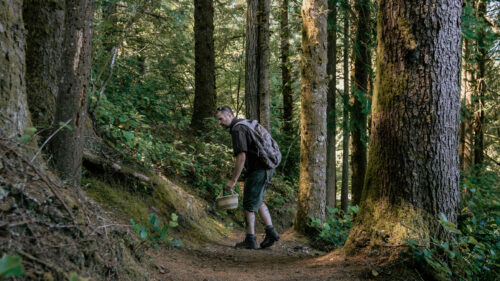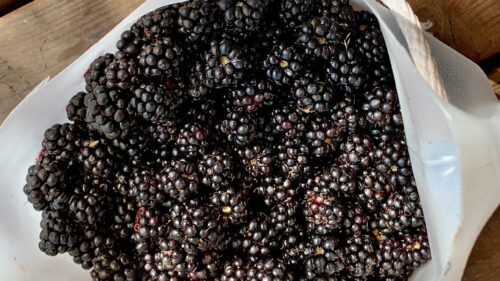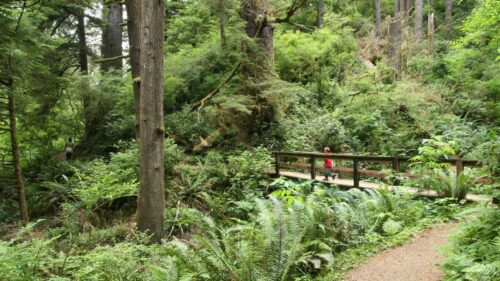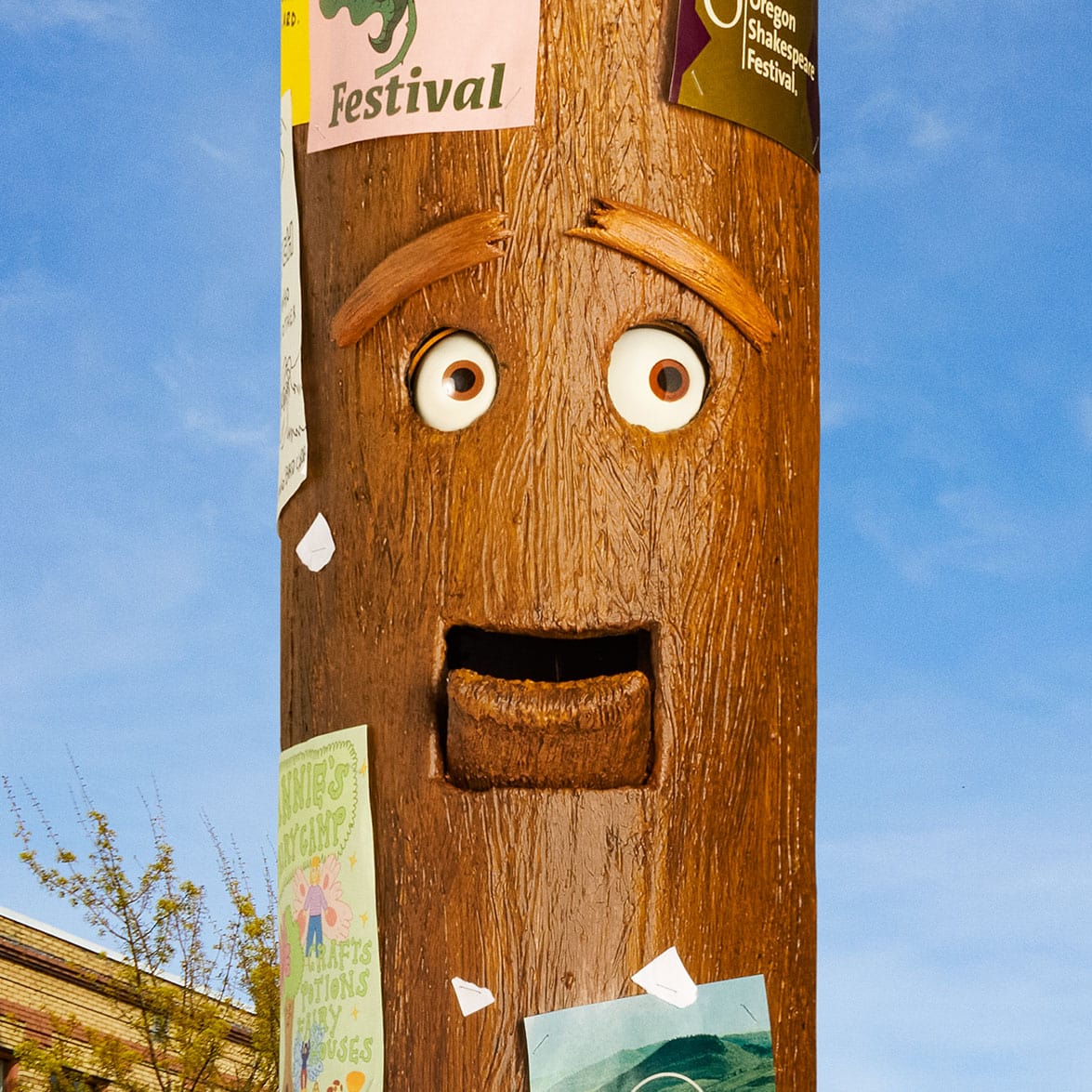When you consider just how fruitful Oregon forests can be for foragers looking to add some wild fare onto the dinner plate, it’s little surprise the state has an official mushroom. The Pacific golden chanterelle — a gorgeous, tasty little treat — is one of several chanterelles that flourish across the Pacific Northwest, making it a common first mushroom for new foragers to find and identify. Here are some tips for a successful first hunt.
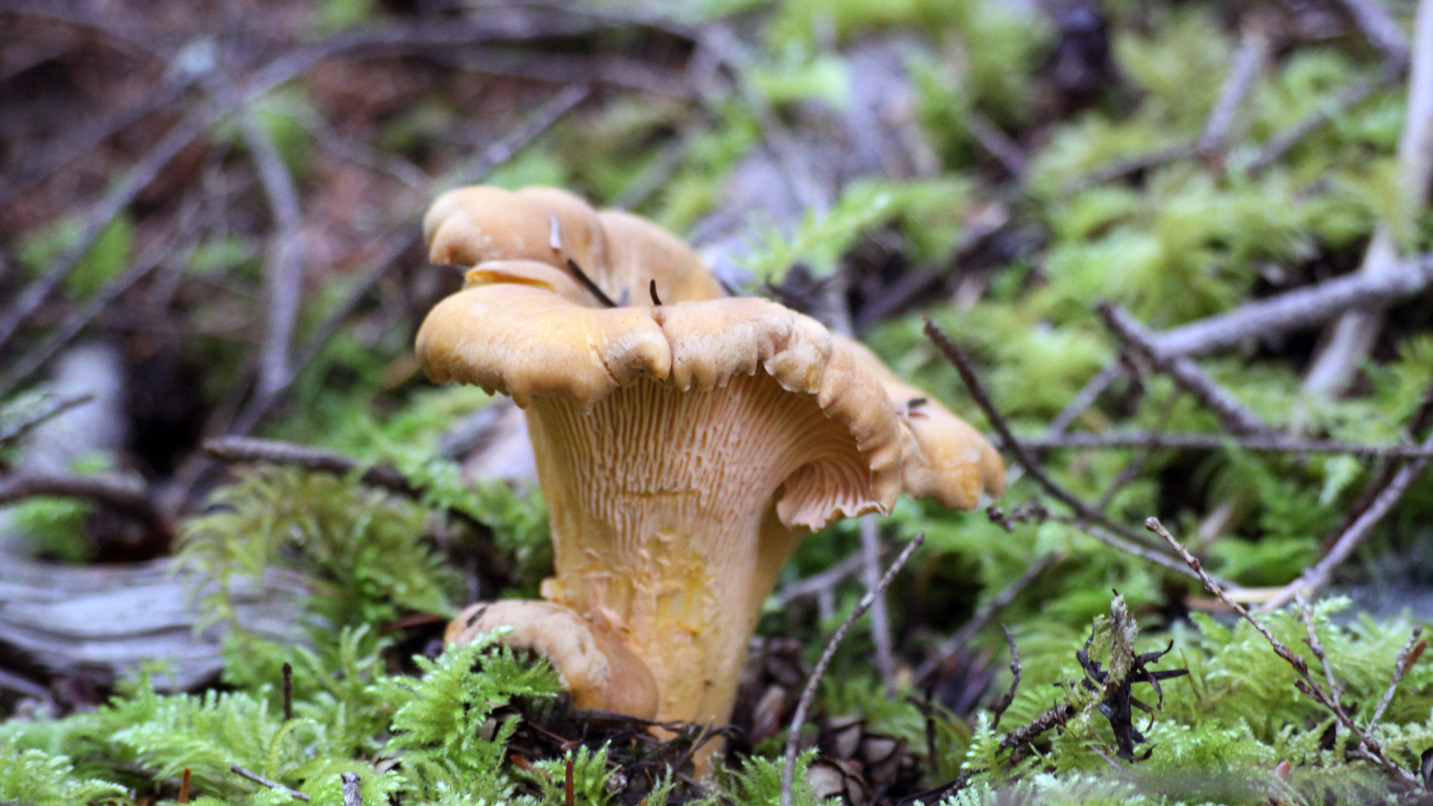
How to Identify a Chanterelle
Although they’re widely abundant in a good year, chanterelles can be a little tricky to identify correctly. A forager’s rule of thumb is to only eat something you’re able to 100% identify. You’ll want to invest in a mushroom identification book, or better yet, go with an expert guide.
There are actually several edible subspecies of chanterelles that look slightly different in color — including a white version and a more colorful one called a rainbow — but they share some distinguishing features. Luckily, these features make all edible chanterelles readily distinguishable from look-alikes that could give you an upset stomach.
The biggest giveaway has to do with the gills, those blade-like structures you’ll find under the cap of the mushroom. On a chanterelle, the gills aren’t gills at all but what’s known as false gills. Instead of thin, flexible blades, false gills will feel more rubbery and look like forked, folded wrinkles that won’t easily break if you press them. They start at the edge of the underside of the cap and run down the stem, also called a stipe.
The cap of the chanterelle itself will likely be wavy and misshapen and not perfectly circular. With their even, golden colored caps, they can look like egg yolks on the forest floor. The flesh of the mushroom will be firm. Chanterelle caps range in size from about an inch wide to the size of a hand later in the season. Give it a whiff: It should smell intensely fruity, some say like apricots.
The Pacific golden chanterelle’s stipe is typically long and considerably more slender than the cap, with a taper toward the base. Cut the stipe open. If it’s hollow, it’s not a chanterelle. Another test is to break apart the mushroom; a chanterelle should resemble the texture of cooked chicken breast.
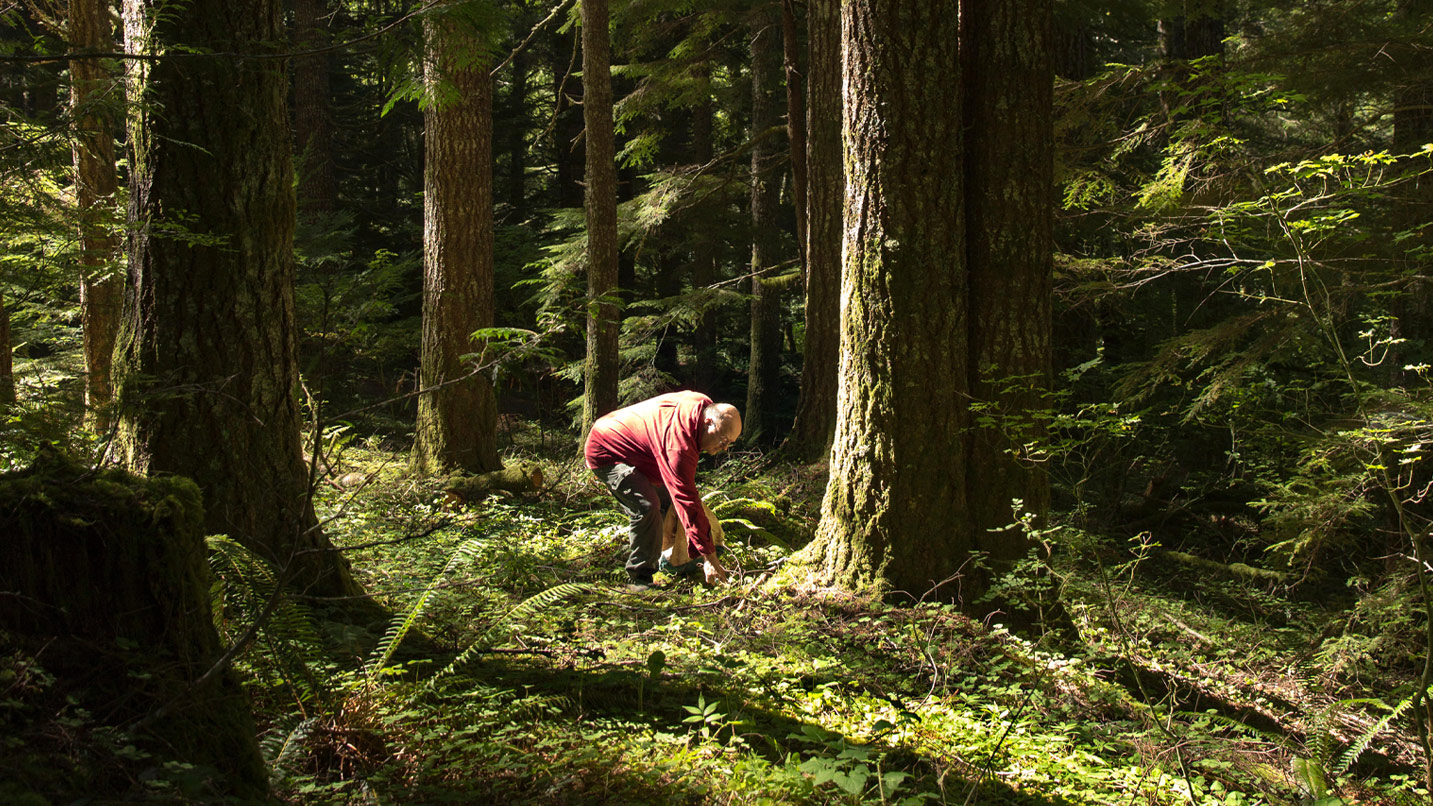
How and Where to Find These Golden Beauties
Chanterelles like cool, wet weather, which means they grow well in the forests of Western Oregon from roughly August through early December. If you’re lucky, a friend may show you some special spots, often guarded closely among resident foragers. Some places to try on your own include many of the state’s national forests, including Willamette National Forest, Mt. Hood National Forest and the Rogue River-Siskiyou National Forest, as well as the slopes of the Cascades and in the coastal forests.
Chanterelles like second-growth forests and north-facing slopes, particularly those with Douglas fir, Sitka spruce or western hemlock. If you find a chanterelle in direct sun or growing on a log, it’s not a chanterelle. They tend to grow in small clusters directly in the ground near trees.
There are few tools out there to help you narrow the hunt. Invest in a good mushroom identification guide. The website and app iNaturalist includes reports on where people have found various varieties of mushrooms, including chanterelles. An app like onX or Gaia GPS can help make sure you’re foraging on public land, as well as help keep you from getting lost.
Know the rules on how many mushrooms you can keep, too. Some areas require permits, and national parks, federally protected wilderness areas and other protected areas may completely prohibit mushroom collection.
Celebrate the Chanterelle With Others
Still not sure? Join a club! Oregon has no fewer than eight mycological societies around the state that are wonderful places to learn, meet new people and get expert opinions on what you’ve found. Their websites often provide updated lists of that year’s festivals, identification walks and workshops across the state, too.
Fall is also a great time to check out mushroom festivals and shows happening around the state. In October Yachats, Portland and Mount Pisgah Aboratorium near Eugene all host celebrations. In November head to Brookings and Salem for more annual festivities.
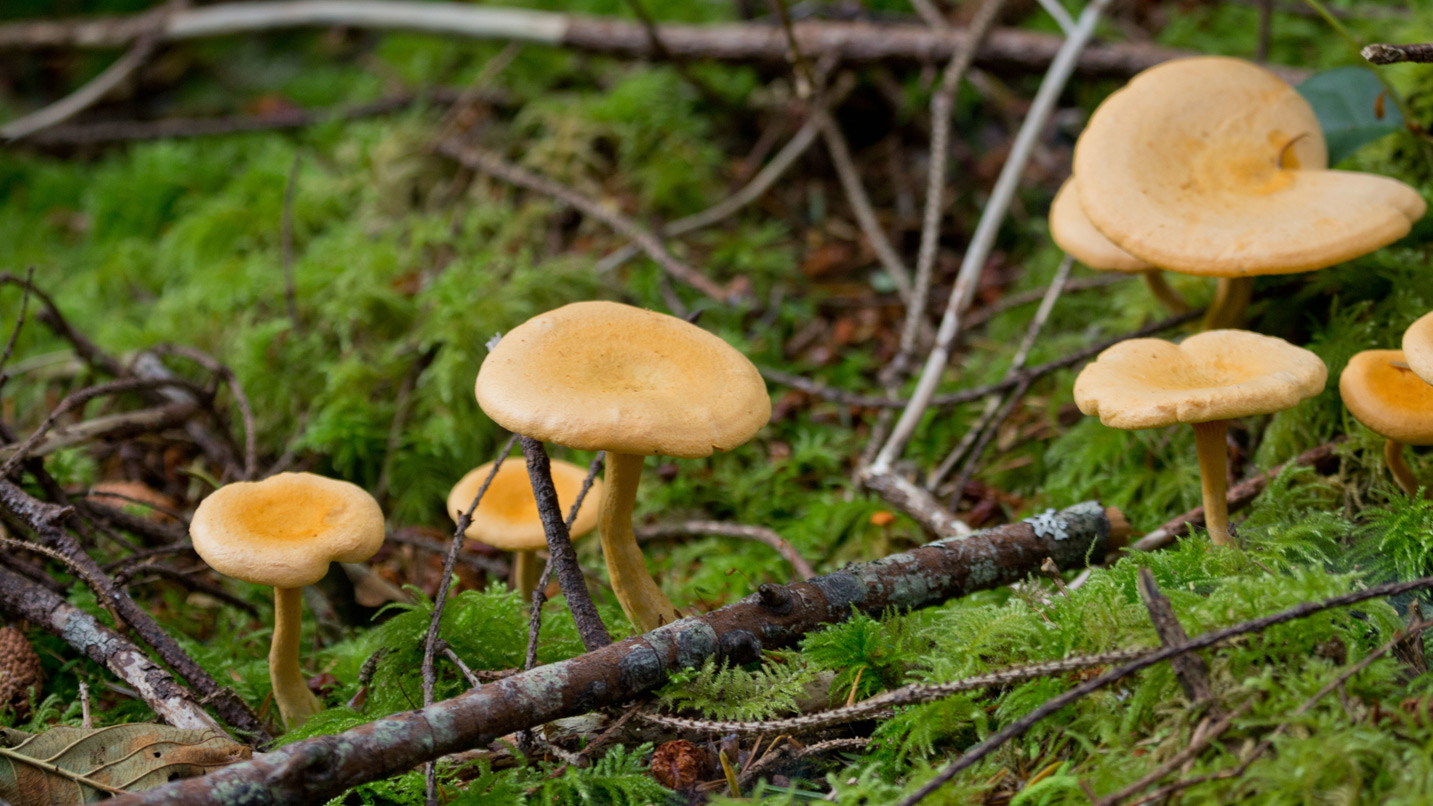
Beware of Chanterelle Look-Alikes
While you can touch even the most deadly mushroom without getting ill, not all mushrooms are safe to eat. Beginners should go with experienced foragers or have someone else double-check your identification. The golden rule is when in doubt, throw it out.
The most common look-alike, false chanterelles can look a lot like the real deal but will have true gills and often have uneven orange coloring. Cut it open and the stipe will be hollow — a dead giveaway. Another common look-alike, the wooly pine spike, may look like a chanterelle in its younger days, but the cap is rounder, the stipe is thick and doesn’t peel like cooked chicken breast. Woolly chanterelles, also called a scaly vase, really do look like a bumpy vase with a lighter outside and orange center. See more photos and explanation of commonly misidentified species that can make you sick, like the bright orange jack o’lantern, which grows in clusters.
Other Foraging Tips
- You’ll want to cook any chanterelles you find, as heat destroys toxins within that can make you sick. Oregon authors Kristen and Trent Blizzard of Modern Forager have a great cookbook focusing on all things ‘shroomy, including tips from experienced Oregonian foragers.
- Even if you’re accustomed to spending time in the woods, it’s easy to get disoriented when you’re focused on scanning the ground. It’s a good idea to hike with a buddy.
- Wear bright clothing to alert hunters and others, and bring food, water, a whistle and a GPS app installed on your phone.
- Know the rules for where and how much you can harvest, including leash laws and parking permits. Stay on public land.
- Harvest sustainably. Leave some mushrooms for wildlife, and clean mushrooms in the field, leaving dirt and trimmings behind. Use a breathable basket for collection instead of a plastic bag to help spread spores that could lead to more mushrooms.
- Join a ranger-led mushroom walk in Oregon’s state parks. Check the Oregon State Parks events calendar for more information.
View this post on Instagram
